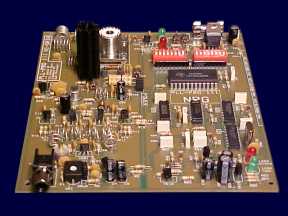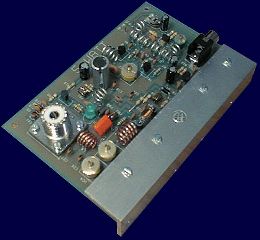WHAT IS PLL AND WHAT IS VFO?
PLL stands for Phase Locked Loop. A PLL is a special circuit on a transmitter, whose function is to ensure that the transmitter frequency cannot drift. It is a frequency drift correction circuit. So once your transmitter is set to 100MHz (for example) it will stay exactly on that frequency. No drift at all, ever! That's not all, it is so good that you can reset the frequency at any time and it will remain exactly on any frequency you select. We refer to such a transmitter as a PLL Transmitter and if you can afford one, this is the type to go for. Remember, PLL transmitters are rock solid stable! The best, but most expensive transmitter choice is a PLL transmitter (Phase Locked Loop Transmitter). Because the transmitter frequency remains absolutely spot on, you know that your listeners will always have the best possible reception (particularly in stereo) without ever having to re-adjust their receiver tuning.
VFO means Variable Frequency Oscillator. In plain English it is a transmitter without a PLL circuit! This means that the transmitter can be bought for much lower cost than than it's PLL counterpart, because there are less parts. Of course there is a slight downside. Should the transmitter decide to drift slightly off frequency, there is no PLL circuit to pull it back. This can sometimes happen if the temperature changes and there can also be a slight gradual frequency over a few weeks. For example, when you set your VFO transmitter to 100 MHz, you may find that it drifts down to 99.95 MHz which may be noticeable on a digital radio receiver. In a worst case scenario, the receiver stereo light may go on and off with the music or the radio may even cut out the sound altogether! However, VFO transmitters tend to 'settle down' after a while and stay pretty much fixed on frequency after that. They give you some power for the money too!
SO WHICH ONE FOR YOU? PLL OR VFO?
A PLL transmitter should be used by any serious Radio Station that plans to be around for some time and is going to cover several miles and/or operate on a commercial basis. If the output power is going to be more than ten watts, you may as well invest in a pll transmitter from the outset. Many people start off with a low power 1-watt pll transmitter and boost the power later with an rf power amplifier. Remember, the advantage of a PLL Transmitter is that the frequency never drifts! It stays on frequency with unbelievable precision. PLL Transmitters types are almost universally used by licenced radio stations all around the world. The only real disadvantage is that it costs more money.
If you want to send your music round the house or just have fun on a Sunday night, then a VFO transmitter will be perfectly adequate. And by simply checking on a digital radio, you can manually correct any drift on a VFO transmitter, and this is easy enough to do! One way to stabilize a VFO transmitter against frequency drift is with a fan to keep the temperature constant. The frequency drift is not at all bad with a good vfo transmitter (such as NRG) and in practice good results are obtained, certainly pleasing and low cost to the beginner or 'yardcaster'. Remember, the advantage of a VFO transmitter is the low cost. The disadvantage is that the frequency can drift slightly after you have set it.
For a Long term, professional, commercial, high power or licenced station
go for pll
Hobby, short range, short term, low budget, RF learning at low cost
is fun with vfo

This is a PLL transmitter - The PLL-PRO III 4-watt

This is a VFO Transmitter - The NRG 5-watt
KEYWORDS
FM = Frequency Modulation--The
Audio varies the transmitter carrier frequency
AM = Amplitude Modulation--
The Audio varies the transmiter carrier amplitude
PLL= Phase Locked Loop
- - The Transmitter frequency is locked, usually to a quartz crystal
VFO= Variable Frequency Oscillator--Transmitter
frequency isn't locked, it's 'free running'
VCO= Voltage Controlled Oscillator--The
locked circuitry of a PLL Transmitter
QUARTZ CRYSTAL=High
accuracy electromechanical device used in watches, transmitters
EXCITER=Strictly
speaking, a 'transmitter' with no aerial
TRANSMITTER=A
transmission system, an Exciter and an Aerial for example.
DIGITAL=1's
& 0's, ON's and OFF's Morse code is an example of digital. Superior
system
ANALOGUE=Infinitely
changing frequency and amplitude, noisy in transmission and recording
AERIAL=A Device
that converts electrical energy into electromagnetic energy, i.e. radio
waves
D.A.B.= Dead
And Buried (digital audio broadcasting) Receivers too expensive